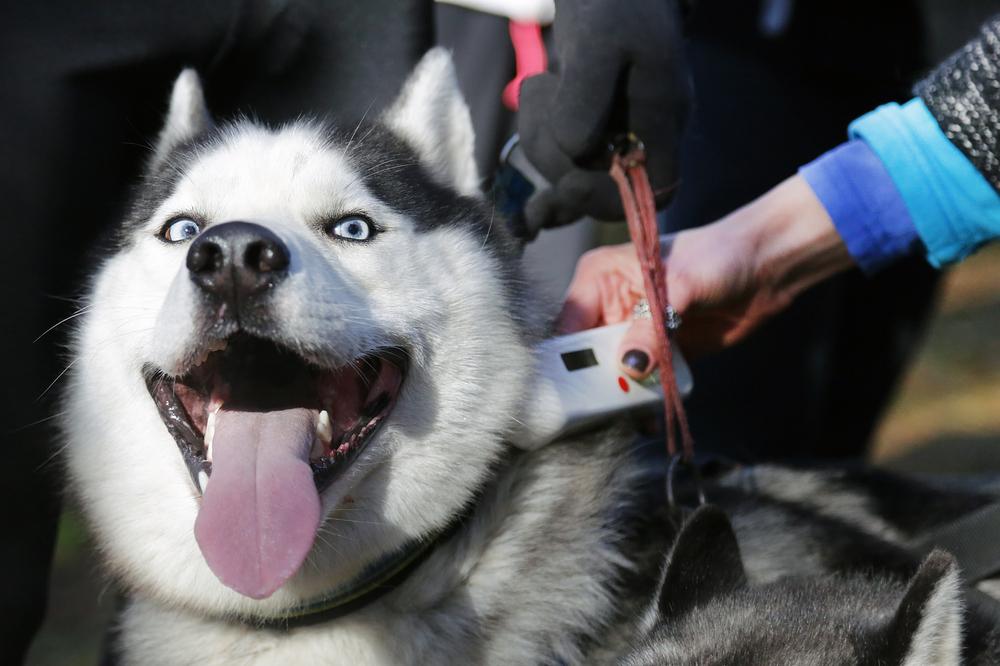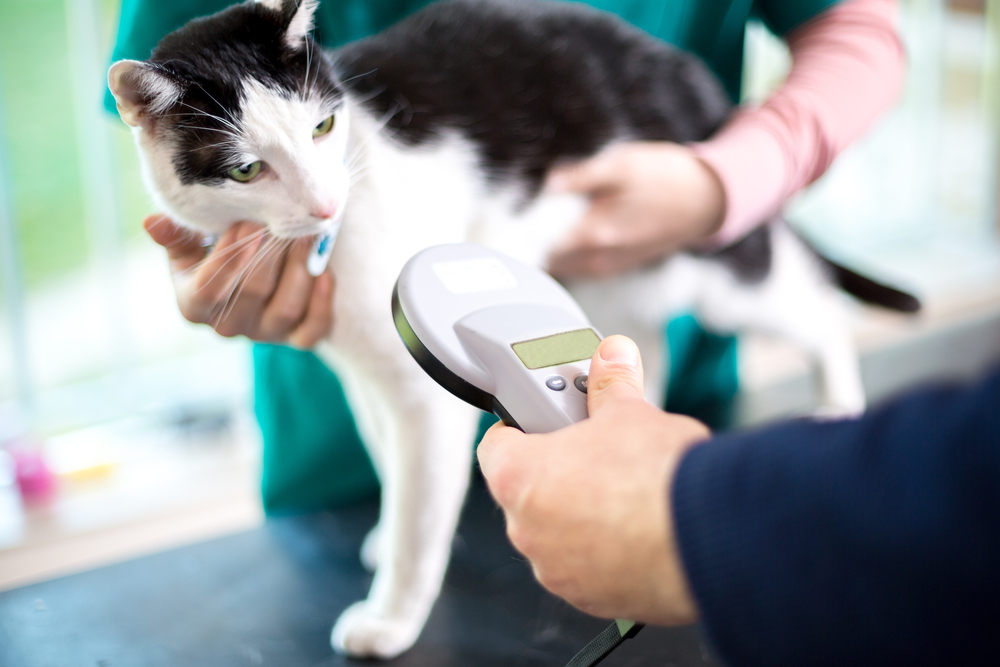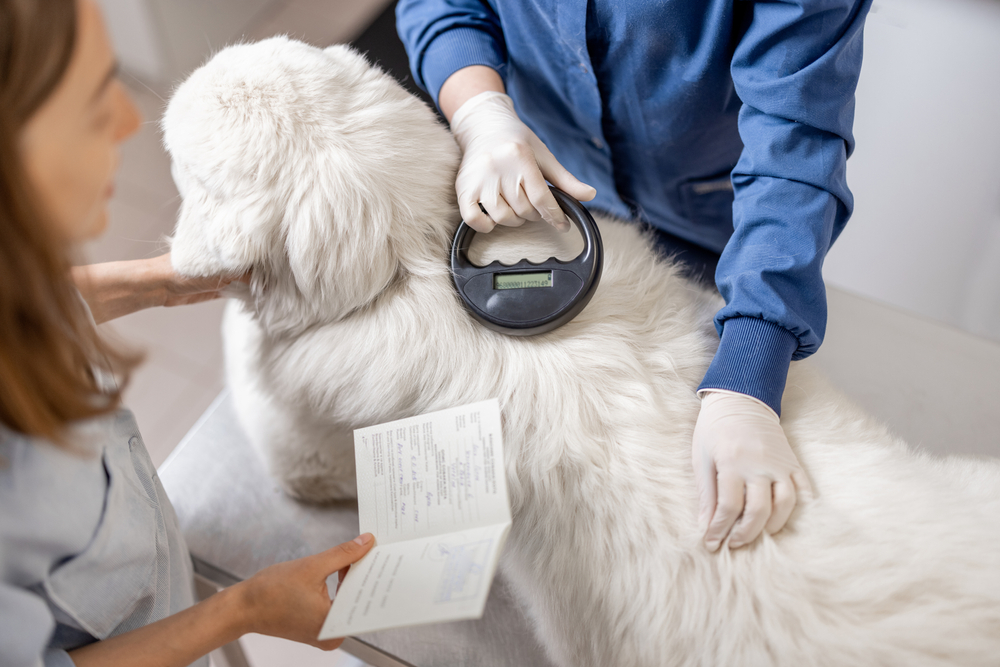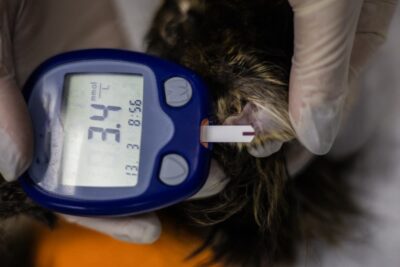How Much Does It Cost to Microchip a Cat or Dog?

As with any facet of pet ownership, we want what’s best for our fur babies. That includes a healthy diet, regular vet visits, and plenty of snuggles. It also includes microchipping your pet to ensure their safety. If you’re wondering how much does it cost to microchip a dog or cat, the surprising answer is: less than you might expect.
Though microchipping pets is optional in the U.S., it’s legally required in other countries. It’s also highly recommended by veterinarians and animal welfare groups around the world. And that’s for good reason. Getting your pet chipped could mean the difference between heartbreak and a happy reunion if they get lost.
That’s a pretty compelling argument for chipping your pet. However, there are other factors to consider, such as the cost. If the financial burden of getting your cat or dog microchipped has you worried, here’s some helpful info to address your concerns.
In this article, you’ll find answers about how much this important safety measure costs. Plus, we’ll provide tips and advice on how to get the most out of your chip. As if that weren’t enough, you’ll even find resources that can help reduce the cost of microchipping.
Is Pet Microchipping Worth It? (Hint: Yes!)

We all know that the cost of caring for our pets can add up fast. However, if you’re considering skipping the chip to save some money, here’s a research-backed reason to think again.
According to a study in the Journal of the American Veterinary Medicine Association, microchipped pets were much more likely to be returned to their families than non-chipped pets. And not just a little more likely…a lot!
The study showed that, among shelter dogs, those with microchips were more than twice as likely to be returned home than non-chipped dogs. And the difference was even more drastic in the cat population. A whopping 40 percent of studied cats with chips were happily reunited with their families, while less than one percent of unchipped felines enjoyed the same fate.
While microchipping will cost you some money, it’s important to remember that losing a pet will also cost you, emotionally. However, the grief and heartbreak of losing a beloved pet is impossible to calculate.
Microchips do not require a battery and are designed to work for about 25 years. So it’s an investment that should last your dog’s lifetime. And, even if you never have to use it, the peace of mind it can provide is priceless.
How Microchipping Works
Microchips are tiny, harmless devices about the size of a grain of rice. Vets can quickly and easily inject them under your pet’s skin, usually right between the shoulder blades. The procedure is similar to getting your pet vaccinated, in terms of complexity and discomfort.
Each microchip has its own unique number. Once you properly register your pet’s chip, that number and any info you associate with it will be stored in a secure database.
If your pet ever goes missing and someone finds them, a professional—like a vet, shelter staff, or animal control officer—can use a universal scanner to read the chip number. Then they can look that number up to see if your pet is registered.
If your registry information is up to date, the authorized professional or registry company will contact you to arrange your reunion.
Microchips don’t track your pet like a GPS collar. And, contrary to popular belief, scanners won’t reveal your personal data, only the microchip number. Instead, microchips store your information passively, only sharing details when scanned. Think of it as your pet’s permanent ID card, always ready to help bring your beloved furry friend back home.
Microchipping Costs: How Much to Microchip a Dog or Cat?

So let’s talk numbers. The answer to “How much to chip a dog or cat?” depends on a number of things, from the region you live in, to the type of facility you choose to chip your pet.
Shelters and low-cost spay/neuter clinics tend to charge on the lower end of the scale for microchipping. (Some may even be free!) Veterinary clinics might charge more, but bundle the procedure with other valuable services, like a physical exam to screen for health issues.
How much does it cost to microchip a cat or dog?
Whether you want to chip your Siamese cat or your Pekinese pup, most facilities will charge the same amount, regardless of species.
Typically, the cost of microchipping a dog or microchipping a cat will range between $25 to $50, according to the American Animal Hospital Association (AAHA).
Whatever you plunk down for your pet’s chip, it generally gets you the same thing. Your payment covers the cost of the chip itself as well as the procedure to insert it.
However, keep in mind that a crucial part of pet microchipping is registering your chip. And that may or may not be included in the procedure cost, depending on the provider.
Every chip has a transponder with a unique number. When you register the microchip, you can include important info, such as your pet’s name, home address, and your contact information in a database. That way, if your pet gets lost and someone (usually a vet) scans them, it’s easier to reunite you.
In the past, different chip manufacturers often maintained separate databases, which made it harder to reunite pets with their families.
Luckily, AAHA now offers the Microchip Registry Lookup Tool, a centralized, online microchip lookup that can search registration information across various databases.
Some registries do charge a one-time registration fee or even an annual fee to maintain your pet’s place in the system. However, this is the exception. Many registries offer free registraton and, so look for no-cost options, like Free Pet Chip Registry.
Microchipping Pets: Other Tips and Advice

Hopefully, now you know how pet microchips work, why they’re important, and the associated costs. So here are a few more tips to help you get the most out of microchipping cats or dogs.
If price is an issue, seek out lower-cost providers. In many regions, local shelters and nonprofit or low-cost clinics may offer lower pricing on pet microchipping year-round. But there are also seasonal opportunities to save. Look for free or low-cost specials during adoption events, during the month of June (which is June is National Microchip Month), and on Aug. 15 for National Check the Chip Day.
Register your chip and keep the info up-to-date. If you don’t follow through on these steps, it’s like throwing the cost of your pet’s microchip down the drain.
Without proper registration, there’s no way to contact and reunite you if your lost pet is found and scanned. Even worse, there could be a dispute about pet ownership if they are stolen or go missing.
An easy way to keep your registry info up-to-date is to ask your vet to scan your pet at their annual vet visit. As long as the chip is working, you just need to log in to the registry service and double-check that your name, contact number, and address are current.
Another option is to mark your calendar for Aug. 15, or Check the Chip Day. This annual event encourages pet parents to double-check that their cat or dog’s microchip is present, functioning, and up-to-date.
Look into pet wellness programs. Most pet insurance plans won’t cover microchipping costs (it’s considered routine care). However, some plans feature wellness programs that cover things like vaccines, health checks, and certain medications for a monthly fee.
Depending on your plan, microchip dog costs might be included in the cost of your pet wellness membership. Ask your vet about any available options. Check microchip requirements before you travel. Most countries require standardized microchips with 15 numbers that can be read by microchip scanners worldwide. If your dog’s microchip has only 9 or 10 numbers, you may need to get them re-chipped to travel overseas.









